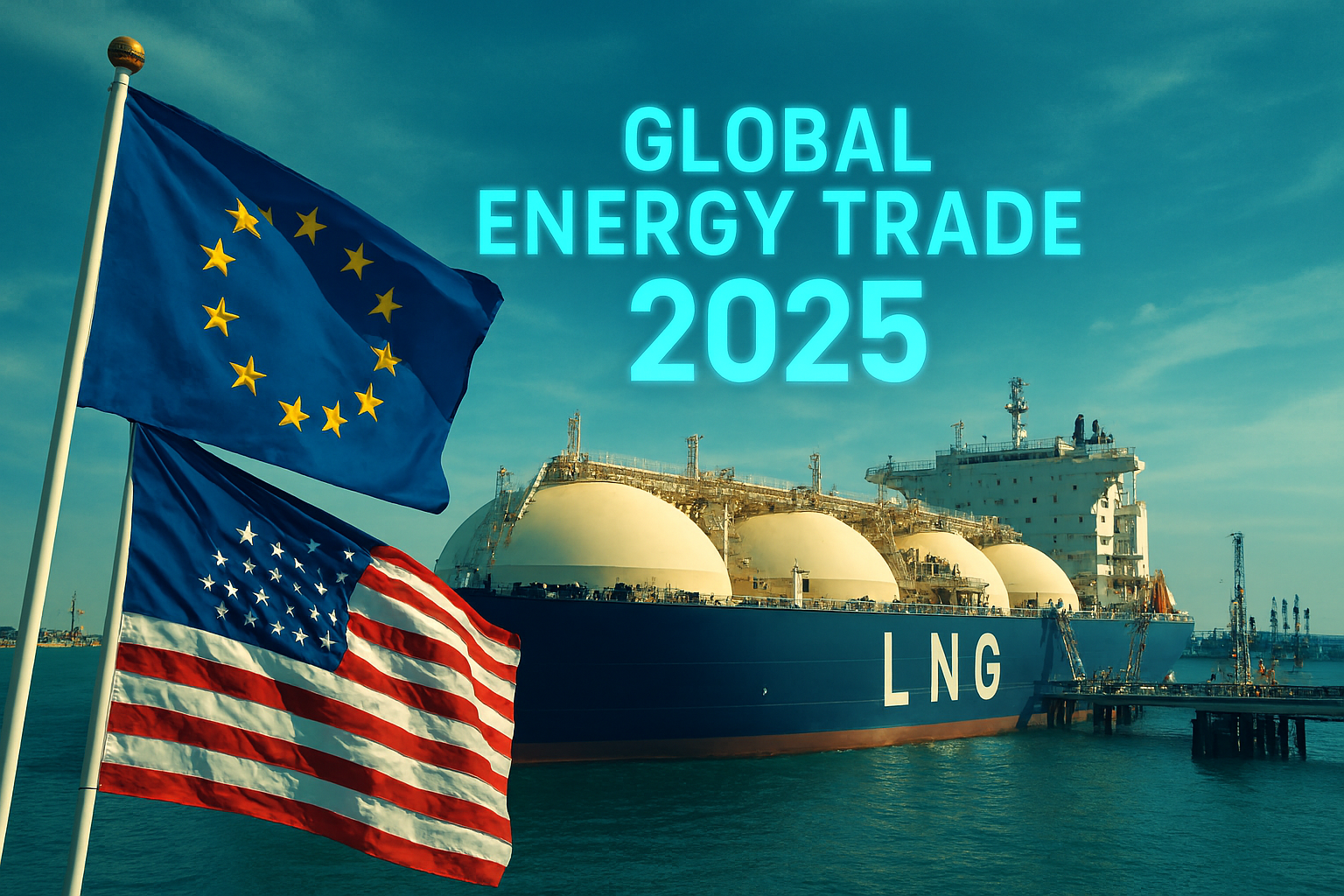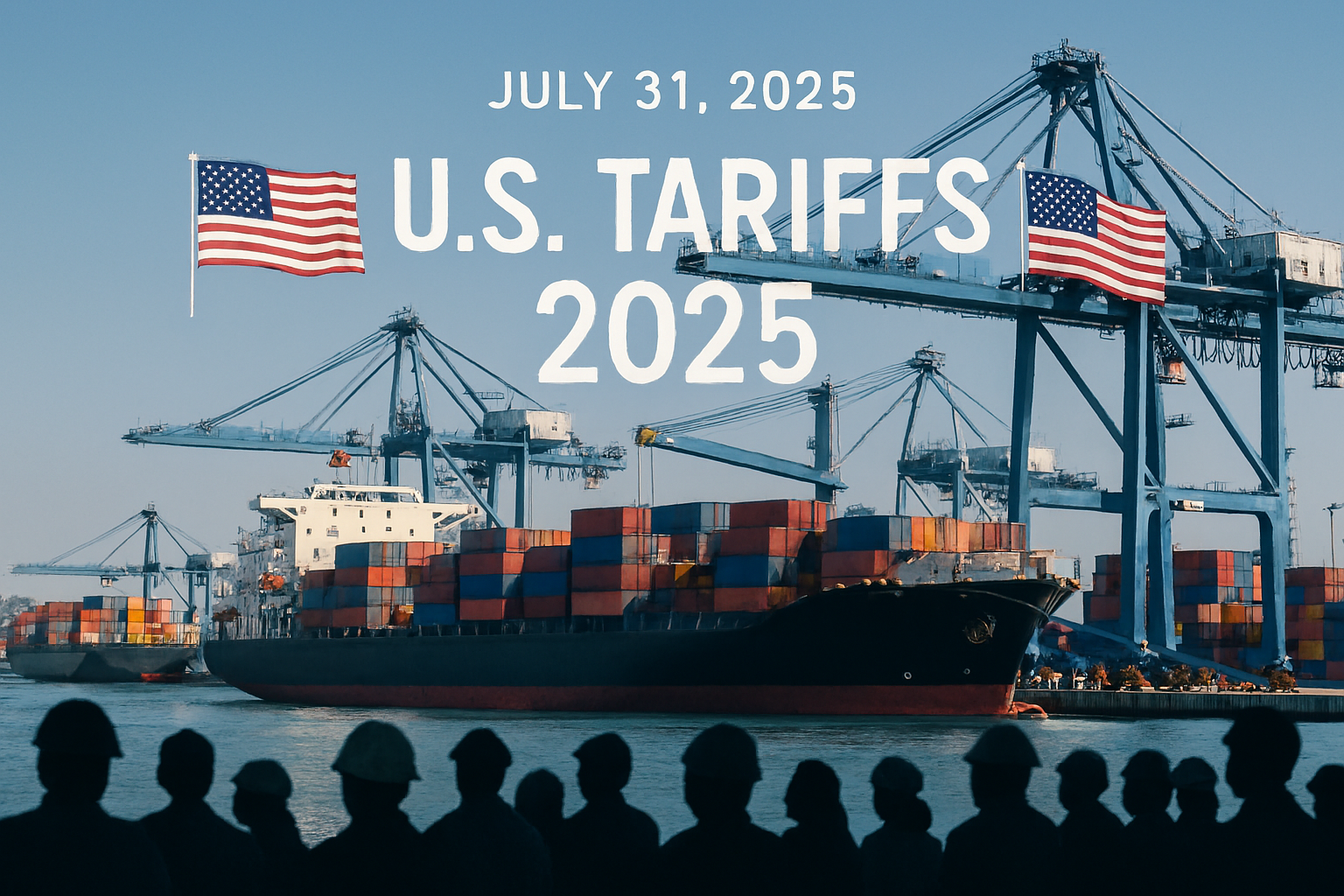Trump LNG Trade Deals 2025: Ambitious Promises, Uncertain Outcomes

As global trade tensions simmer, President Donald Trump’s aggressive push for U.S. energy exports has nations from Europe to Asia promising billions to buy American liquefied natural gas (LNG), crude oil, and nuclear technology. The Trump LNG trade deals 2025, highlighted by a $750 billion European Union commitment, aim to slash trade deficits and cement U.S. energy dominance, per The New York Times. Yet, behind the headlines lie daunting challenges: limited U.S. supply, private sector resistance, and potential climate setbacks. Can these deals deliver, or are they political theater with high stakes for global markets and the environment?
The Core of Trump’s Energy Trade Strategy
Trump’s trade negotiations mark a shift from traditional rule-based commerce to direct, volume-driven energy pledges, per The New York Times. Key deals include:
- European Union: The EU pledged $750 billion in U.S. energy purchases over three years ($250 billion annually), covering LNG, crude oil, nuclear fuel, and petroleum derivatives, per The New York Times. This is a leap from $70–$80 billion in 2024, driven by the bloc’s shift from Russian gas post-2022 Ukraine invasion, per CNBC.
- Asia: Japan, South Korea, and Taiwan are reviving a $44 billion Alaska LNG project, with commitments to finance and buy gas to avoid tariffs, per CNBC. Vietnam, Thailand, and India also signaled increased U.S. LNG purchases, per Euronews.
- Middle East: Kuwait and Bahrain are negotiating long-term U.S. LNG contracts, while Trump pushes Saudi Arabia for nuclear and gas deals, per Atlantic Council.
- Others: Ukraine and South Africa proposed U.S. energy deals to secure aid and drilling rights, per The New York Times.
These commitments, often tied to tariff exemptions, aim to address U.S. trade deficits, which hit $72 billion in May 2025, per E&E News. Trump’s first-term China deal, which fell short of its $200 billion energy target, serves as a cautionary tale, per The New York Times.
Feasibility Challenges
Analysts question the deals’ viability due to supply, infrastructure, and governance issues:
- Limited U.S. Supply: The U.S. exported $166–$318 billion in oil and gas globally in 2024, with LNG at 84.2 million tons, per Politico.eu and OilPrice.com. Tripling EU purchases to $250 billion annually would require diverting nearly all exports, sidelining other buyers, per The New York Times. New LNG capacity, expected to double by 2030, won’t fully materialize before Trump’s term ends, per Bloomberg.
- Private Sector Autonomy: Neither the EU nor U.S. government can mandate private companies to buy or sell specific volumes. EU firms prioritize market prices, and U.S. LNG is often sold to the highest global bidder, per Politico.eu. A senior EU official admitted the $750 billion target relies on “private company intentions,” per Politico.eu.
- Infrastructure Constraints: EU refineries can handle only 14% U.S. crude due to oil blend compatibility, per Politico.eu. LNG import terminals are near capacity, and new facilities face delays, per Yahoo Finance. The Alaska LNG project, costing over $40 billion, remains uneconomic and years from completion, per CNBC.
Critics argue the deals are “aspirational” rather than enforceable, echoing Trump’s first-term China pact, which lacked penalties for non-compliance, per The New York Times. A White House official suggested tariffs as a response to unmet EU targets, but details remain vague, per The New York Times.
Climate and Energy Security Implications
The deals pose risks to global climate goals and energy security:
- Climate Concerns: Increased LNG reliance could displace EU renewable energy deployment, undermining the bloc’s 55% emissions cut target by 2030, per The New York Times. U.S. LNG’s carbon footprint, 10 times higher than piped gas, exacerbates emissions, per The New York Times. Asian nations risk locking in fossil fuel infrastructure, slowing clean energy transitions, per Euronews.
- Energy Security: Replacing Russian gas with U.S. LNG reduces EU dependence on Moscow but risks over-reliance on Washington, per Cipher News. Russia’s 2022 Ukraine invasion exposed the dangers of single-supplier dependency, per Yahoo Finance. Analysts warn Trump’s tariff threats could politicize energy trade, per The Guardian.
- Market Dynamics: Global LNG markets may face oversupply by 2026, potentially lowering prices but complicating new project financing, per Atlantic Council. Reselling U.S. LNG to non-EU buyers could artificially inflate trade figures, per The New York Times.
The establishment narrative of “energy dominance” overlooks these trade-offs, prioritizing short-term political wins over long-term stability, per Politico.eu.
Economic and Geopolitical Impacts
- U.S. Economy: LNG stocks (e.g., Cheniere, Venture Global) surged post-EU deal, with a $15 billion financing round for Venture Global, per Yahoo Finance. New projects could create jobs but may raise domestic energy prices, per NPR. Diverting exports to Europe could strain supplies for Asia, per Reuters.
- Geopolitics: Trump’s deals aim to counter Russian influence, especially in Europe, by replacing Moscow’s LNG, per Atlantic Council. Middle East LNG agreements could pressure Russia in Ukraine negotiations, per Atlantic Council. However, alienating Asian buyers risks pushing them toward Qatar or Australia, per Reuters.
- Trade Tensions: Tariff threats (15% for EU, 10% globally) drive deals but risk retaliatory tariffs on U.S. energy, per Reuters. Europe’s ability to source LNG from Norway or Qatar strengthens its bargaining position, per Politico.eu.
What’s Next for Stakeholders
- Governments: EU officials must clarify how to incentivize private firms without distorting markets, per CNBC. Trump’s team should prioritize realistic targets and enforceability, per The New York Times.
- Companies: U.S. exporters like Cheniere and Venture Global must secure long-term contracts, while EU firms weigh cost versus compliance, per Bloomberg. Asian investors in Alaska LNG face high risks, per CNBC.
- Consumers: Higher U.S. exports could raise domestic gas prices, impacting U.S. households, per NPR. EU consumers may face elevated energy costs if LNG premiums persist, per The Guardian.
Conclusion
The Trump LNG trade deals 2025 promise a seismic shift in global energy markets, with countries pledging billions to buy U.S. gas to avoid tariffs. Yet, supply constraints, private sector autonomy, and climate risks cast doubt on their success. As Trump pushes for “energy dominance,” the deals may reshape trade but at the cost of economic and environmental stability. Stay informed as these negotiations unfold, and share your insights below.










